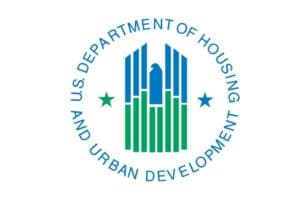Affordable housing developers are under pressure to meet soaring demand for multifamily rental units amid rising interest rates and the escalating costs of construction. A key to maintaining viability lies in carefully selecting and balancing financing mechanisms, with each option presenting unique benefits and challenges.
Public Offerings
Public offerings are a common way to fund large affordable housing projects. By selling debt securities to a broad base of investors, developers can access substantial capital. Public offerings are typically well-suited to larger, established developers who have the resources to meet the reporting requirements and ongoing disclosure obligations that come with public market funding.
- Pros: Access to a broad investor base, generally lower interest rates due to the competitive bidding process;
- Cons: Higher administrative costs and regulatory compliance. Developers must prepare for rigorous SEC disclosure requirements and ongoing financial transparency; and
- Use Case: Ideal for large projects with significant funding requirements that are able to absorb the costs of public issuance.
Private Placements
Private placements involve raising funds from a select group of institutional or high-net-worth investors. This method is typically less costly than public offerings due to reduced regulatory requirements, making it attractive for mid-sized developers or projects where time constraints are a factor.
- Pros: Lower issuance costs and less regulatory burden than public offerings; quicker access to funds;
- Cons: Potentially higher interest rates due to a smaller investor pool, and typically fewer investor protections compared to public offerings; and
- Use Case: Private placements are suited for projects where developers seek a quicker, more streamlined funding process without the requirements of public markets.
Mortgage-Backed Securities (MBS)
Mortgage-backed securities involve pooling mortgages and selling them as securities to investors, creating liquidity by allowing developers to offload loan risk. MBS can be an efficient way to fund affordable housing developments through federally supported programs, such as those offered by Fannie Mae or Freddie Mac. This method can also bring in lower interest rates, as MBS investors are typically attracted to government-backed guarantees associated with affordable housing projects.
- Pros: Offers access to significant capital with competitive rates, especially for projects that meet specific affordable housing criteria;
- Cons: More complex structuring, as MBS requires projects to meet specific eligibility criteria for backing by agencies, like Fannie Mae or Freddie Mac; and
- Use Case: Ideal for developers seeking to fund large portfolios of rental properties or those looking to refinance existing debt with government backing.
Tax-Exempt Bonds
Tax-exempt bonds, such as municipal bonds, allow developers to raise funds with the benefit of lower interest rates due to the tax-exempt status of interest earned by bondholders. These bonds are often issued by government agencies specifically to support affordable housing initiatives and are commonly paired with LIHTCs to maximize affordability.
- Pros: Lower borrowing costs due to the tax-exempt nature of the bonds; strong alignment with affordable housing goals; can often be combined with other subsidies;
- Cons: Strict eligibility requirements, limited funding caps and administrative costs associated with compliance; and
- Use Case: Well-suited for developers committed to long-term affordability, particularly in projects eligible for additional tax credit subsidies.
Comparison of Options
Each financing structure presents trade-offs in terms of cost, regulatory burden and accessibility. Public offerings and tax-exempt bonds generally offer the lowest cost of capital, but each requires navigating strict regulatory landscapes. Private placements provide flexibility and faster access to capital, while MBS can deliver government-backed stability and liquidity for eligible affordable housing projects.
Strategic Considerations for Developers
To select the optimal financing route, developers must consider:
- Project Scale and Cost Structure: Larger projects may justify the costs of public offerings or MBS-backed funding;
- Timeline and Market Conditions: Time-sensitive projects may lean toward private placements for quicker funding, while projects with long-term horizons may benefit from tax-exempt bond financing; and
- Regulatory Compliance Capacity: Public offerings and tax-exempt bonds require resources for compliance, while private placements offer more flexibility.
Balancing these options and potentially using a mix of funding sources can help developers achieve financial stability, manage risk and ensure affordable housing remains financially viable amid current market challenges.


